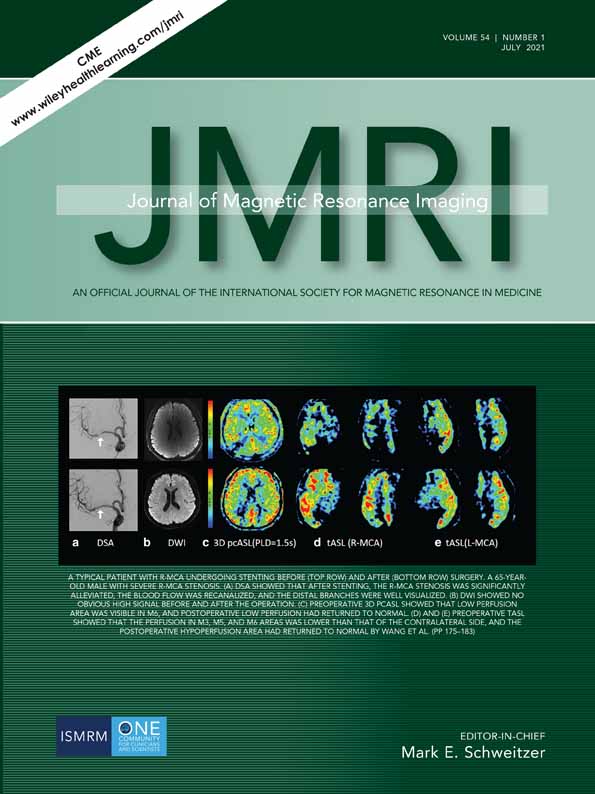Noninvasive oxygenation assessment after acute myocardial infarction with breathing maneuvers-induced oxygenation-sensitive magnetic resonance imaging
Abstract
The safety profiles when performing stress oxygenation-sensitive magnetic resonance imaging (OS-MRI) have raised concerns in clinical practice. Adenosine infusion can cause side effects such as chest pain, dyspnea, arrhythmia, and even cardiac death. The aim of this study was to investigate the feasibility of breathing maneuvers-induced OS-MRI in acute myocardial infarction (MI). This was a prospective study, which included 14 healthy rabbits and nine MI rabbit models. This study used 3 T MRI/modified Look-Locker inversion recovery sequence for native T1 mapping, balanced steady-state free precession sequence for OS imaging, and phase-sensitive inversion recovery sequence for late gadolinium enhancement. The changes in myocardial oxygenation (ΔSI) were assessed under two breathing maneuvers protocols in healthy rabbits: a series of extended breath-holding (BH), and a combined maneuver of hyperventilation followed by the extended BH (HVBH). Subsequently, OS-MRI with HVBH in acute MI rabbits was performed, and the ΔSI was compared with that of adenosine stress protocol. Student's t-test, Wilcoxon rank test, and Friedman test were used to compare ΔSI in different subgroups. Pearson and Spearman correlation was used to obtain the association of ΔSI between breathing maneuvers and adenosine stress. Bland–Altman analysis was used to assess the bias of ΔSI between HVBH and adenosine stress. In healthy rabbits, BH maneuvers from 30 to 50 s induced significant increase in SI compared with the baseline (all p < 0.05). By contrast, hyperventilation for 60 s followed by 10 s-BH (HVBH 10 s) exhibited a comparable ΔSI to that of stress test (p = 0.07). In acute MI rabbits, HVBH 10 s-induced ΔSIs among infarcted, salvaged, and the remote myocardial area were no less effectiveness than adenosine stress when performing OS-MRI (r = 0.84; p < 0.05). Combined breathing maneuvers with OS-MRI have the potential to be used as a nonpharmacological alternative for assessing myocardial oxygenation in patients with acute MI.
Level of Evidence
2
Technical Efficacy Stage
2




